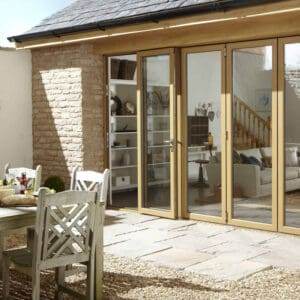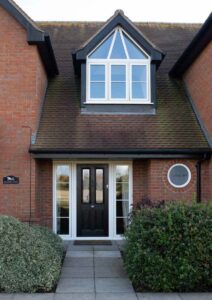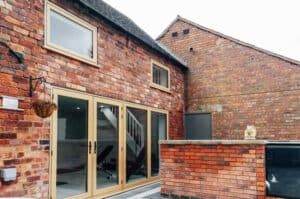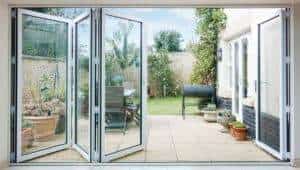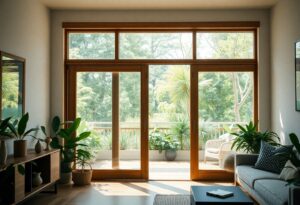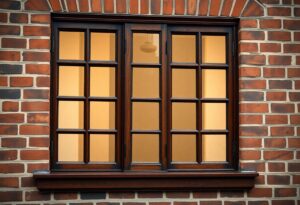Welcome to our ultimate guide on how to choose the perfect timber for your sash windows! Sash windows, known for their timeless beauty, characteristic charm, and historical significance, have long been a popular choice for homeowners. With the right type of timber, these windows can offer excellent durability, thermal efficiency, and aesthetic appeal that go with any architectural style. But, given the vast array of timber options available in the market today, selecting the ideal one for your sash windows can be a daunting task. Fret not! This comprehensive guide aims to make the process simpler, providing you with invaluable insight into different types of timbers, their unique properties, and benefits, along with expert tips to help you make an informed decision while fulfilling your practical and design aspirations. So, without further ado, let’s dive in and unravel the mysteries of choosing the perfect timber for your sash windows!
1. Understanding Timber Sash Windows
Timber sash windows, often referred to as sliding sash, hung sash or box sash windows, have long been synonymous with traditional architecture and design. Known for their distinct charm and period aesthetics, these windows are commonly found in 18th and 19th-century properties, adding an elegant touch to homes that wish to maintain a sense of historical authenticity.
These windows function by featuring two vertical sliding panels within a wooden frame, which allows them to open and close using traditional mechanisms. While some variations of these windows may have just one moving panel (single-hung), others may have two (double-hung); both styles retain the classic charm that wooden sash windows are admired for.
When considering timber sash windows for your property, it’s essential to have a clear understanding of the various styles available. For instance, Georgian, Victorian, and Edwardian sash windows all boast unique characteristics that set them apart from each other, while still maintaining an overall traditional theme.
Additionally, homeowners should be aware of any potential restrictions that may apply when choosing wooden sash windows, especially when it comes to listed buildings or properties in conservation areas. Regulations governing these areas typically require that any alterations to properties must remain in line with the historical context, thereby preserving the heritage of these buildings.
In conclusion, understanding timber sash windows involves appreciating their history, design, and practical application. By doing so, homeowners can select the most suitable option for their property, ensuring a perfect fusion [1][2]
2. Benefits of Wooden Sash Windows
Wooden sash windows offer several advantages, making them a popular choice for homeowners who desire a timeless and elegant design. These gracefully crafted window options not only enhance the aesthetic appeal of the property but also provide numerous practical benefits. One of the most notable perks of wooden sash windows is their durability. Made with high-quality timber, these windows have been known to last for decades, with minimal maintenance required.
The inherent insulating properties of wood make wooden sash windows more energy-efficient, helping to keep your home warm in the colder months and cool during the summertime. This, in turn, reduces energy consumption and lowers your heating and cooling bills. Additionally, wooden sash windows are relatively simple to repair or refurbish, ensuring that they continue to look and function at their best for many years.
In terms of design flexibility, wooden sash windows can be customized to suit your property’s needs, circumventing the limitations of mass-produced alternatives. The natural beauty of wood is a significant draw, allowing homeowners to choose the perfect grain and color to complement their home’s style. Furthermore, wooden sash windows can be painted or stained, allowing homeowners to update their appearance as desired.
With regard to acoustics, wooden sash windows excel at noise insulation, which is particularly beneficial for properties situated in busy areas. This superior soundproofing is a result of the tightly sealed design of sash windows, which helps to provide a quieter and more peaceful home [3][4]
3. How Do Timber Sash Windows Work?
Timber sash windows are a perfect blend of history, aesthetics, and functionality that have stood the test of time. They work on a simple yet efficient mechanism, which makes them an ideal choice for homeowners who value both beauty and practicality. But how exactly do these windows function? Let’s dig deeper into the workings of timber sash windows.
At their core, timber sash windows consist of two wooden panels, or ‘sashes’, which hold the glass panes. These sashes are designed to slide vertically in grooves, allowing for easy opening and closing of the window. In traditional sash windows, a system of cords, chains, and counterweights is used to balance the weight of the sashes, making it effortless to operate the window. This counterbalancing mechanism is usually housed within a wooden ‘box’ frame, which is hidden from view.
Historically, the earliest sash windows were single-hung, meaning only one sash (usually the lower one) could be moved. However, as designs evolved, double-hung windows became more prevalent, allowing both sashes to slide open and closed. This increased flexibility in how the window could be opened, improving ventilation and ease of cleaning.
The beauty of timber sash windows lies in the perfect proportion of their components, which provides an elegance unmatched by other window styles. Additionally, their balanced design allows for smooth operation, making them superior to casement windows that rely on hinges to open and close.
4. Types of Timber Sash Windows
Timber sash windows, also known as sliding sash windows or box sash windows, are a classic and versatile window style that has been used in various architectural periods. There are several types of timber sash windows to choose from, each with its unique design and features, ensuring that any homeowner can find the perfect option for their property.
One of the most common types of timber sash windows is the single-hung design, which features one moving panel, typically the bottom sash. In contrast, double-hung sash windows have two moving panels – both the top and bottom sashes can be opened for improved ventilation. Triple and quadruple hung sash windows also exist, though they are less commonly used.
Sliding sash windows can be customized to replicate period styles such as Georgian, Victorian, or Edwardian designs, making them particularly suitable for traditional or historic homes. However, they are also a popular choice for modern homes, as their timeless aesthetic adds a touch of charm and character.
When selecting timber sash windows, it is essential to consider the specific type of wood used for the window frames and sashes. Some popular choices include Accoya or Tricoya for window frames, while Accoya and European Oak often prove suitable for window sashes thanks to their durability and resistance to rot. For non-external facing parts, options like Tulipwood can be used without as much concern for exposure to weathering.
5. Traditional Sash Windows for Period Properties
Traditional sash windows are an essential feature in period properties, adding character and authenticity to homes built during the Georgian, Victorian, and Edwardian eras. When renovating or restoring a period property, it is crucial to choose the correct style of sash window to maintain its architectural integrity and enhance its overall aesthetic appeal.
Period sash windows are known for their distinctive designs, which typically feature multiple panes separated by glazing bars. During the Georgian era, sash windows often had complex grid patterns such as six-over-six or eight-over-eight, reflecting the limitations of glassmaking technology at the time. Victorian sash windows, on the other hand, tended to have larger panes of glass with fewer glazing bars, often with fewer panes on the bottom sash and more on the top.
When choosing traditional sash windows for a period property, it is important to base your selection on the architectural style of the building as well as any local planning or conservation restrictions that may apply. Ensure that the chosen timber sash window design complements the property’s original style, taking into consideration factors such as dimensions, the arrangement of the panes, and specific details such as decorative mouldings or ironmongery.
6. Modern Sash Windows
Modern sash windows are increasingly popular among homeowners seeking to incorporate the classic charm and elegance of traditional sash windows into their contemporary homes. These windows successfully blend the vintage appeal of wooden sash windows with innovative advancements and materials to offer superior performance, aesthetics, and functionality.
One major advantage of modern sash windows is their increased thermal efficiency, as compared to their traditional counterparts. Double or even triple-glazed panes ensure better insulation, helping to keep your home warm and comfortable while reducing energy consumption and utility bills. They also cater to the increasing demand for eco-friendly choices in home construction.
Further, modern sash windows have improved draft-proofing capabilities, thanks to the incorporation of efficient weatherstripping and sealing features. This, in turn, significantly enhances the overall comfort of your home by preventing drafts and minimizing external noise.
Another aspect that sets modern sash windows apart is the use of modern materials such as uPVC, aluminum, and engineered wood. These materials not only provide a stunning visual appeal but also ensure durability, low maintenance, and resistance to rotting, warping, and swelling.
Moreover, modern sash windows offer homeowners the flexibility to customize their windows based on individual preferences, without the restrictions imposed on listed or conservation buildings. A wide range of design options, colors, finishes, and hardware choices allows you to create a unique, eye-catching feature that complements your home’s architectural style and personal tastes.
7. Compliance with Building Regulations
When selecting the perfect timber for your sash windows, it is essential to consider the building regulations that govern the installation of new windows and doors, specifically Part L related to thermal performance. As a homeowner, you have the responsibility to ensure that your window supplier is compliant with these regulations because non-compliant windows would be condemned and could potentially need replacing.
Part L Building Regulations, which came into effect in 2014, stipulate that when you replace a window or door, including the sub-frame, it should comply with the prescribed thermal performance standards for new windows and doors. This means that the materials used, the design, and the construction of your sash windows must meet specific requirements in order to ensure energy efficiency and minimal heat loss.
Listed buildings, however, are exempt from Part L requirements. Nevertheless, when installing sash windows in conservation areas, homeowners must adhere to locally enforced measures that require the installation of windows and doors that match the original style of fenestration. This is to preserve the historical and architectural heritage of these areas.
In such conservation areas, skilled joiners can create windows and doors that replicate the original design elements while still incorporating modern features, such as slim sealed units filled with special gases, to ensure thermal performance equivalent to their plastic counterparts. This compliance with building regulations is key when choosing the right timber and design for your sash windows, ensuring a perfect blend of aesthetics, functionality, and compliance with legal requirements. [13][14]
8. Conservation Areas
When it comes to choosing timber for sash windows in conservation areas, there are some important factors to consider. Conservation areas are designated zones that protect the historical and architectural significance of buildings and landscapes. As such, any changes or renovations must adhere to certain guidelines and may require permission from the local planning authority. One of the primary concerns when selecting timber for sash windows in conservation areas is ensuring that the chosen material is in keeping with the character and aesthetic of the area.
Homeowners in conservation areas looking to install or replace timber sash windows should first consult with their local conservation officer. These experts can provide guidance on the specific requirements and restrictions for the area, helping homeowners to avoid potential fines or legal issues. In many cases, conservation officers will recommend that homeowners select traditional and authentic materials, such as hardwoods or softwoods, that closely match the period and style of existing properties in the area.
When considering timber options for sash windows, it’s important to prioritize sustainability and durability. Look for FSC certified or responsibly sourced hardwoods, which not only provide an authentic appearance but also offer greater longevity and minimal environmental impact. Softwoods, while generally more affordable, should be treated and maintained carefully to ensure they withstand weather-related wear and tear.
9. Jargon Buster and General Practical Advice
Navigating the world of sash windows can be a bit overwhelming, especially when you encounter the numerous technical terms used by window specialists. That’s why it’s important to familiarize yourself with the jargon, so you can better understand and communicate what you want for your home. In this guide, we will help demystify some common terms and provide practical advice for choosing the right timber for your sash windows.
First, let’s clarify the difference between a sash and a sash window. A sash refers to the individual section of a window that opens, while a sash window is a type of window that uses a sliding mechanism for opening and closing. These windows often have traditional features like astragal bars, which are decorative elements between the panes of glass, and horns, which are placed on the outside or inside of the sash as an original feature.
When it comes to choosing timber for your sash windows, it’s advisable to discuss your options with a specialist who can guide you towards materials that best suit your desired look and budget. Perfectionists should pay attention to the type of timber used, as this plays a significant role in the window’s overall appearance and durability. Hardwoods like oak and mahogany are popular choices for their strength and resistance to warping, while softwoods like pine may be more affordable but require extra protection treatments.
10. Perfectionist’s Points for Choosing Timber for Sash Windows
When aiming for perfection in selecting the perfect timber for your sash windows, it is crucial to consider several factors that can impact the overall performance, aesthetics, and durability of the windows. Here are ten points that every perfectionist should think about:
1. Durability: Opt for timber that falls under class one or two in the durability chart, ensuring a long-lasting window, with Accoya being a popular choice for its resilience and low maintenance.
2. Stability: Timber with high stability can better handle seasonal fluctuations, reducing the risk of warping or twisting. Accoya, European Oak, and Red Grandis are known for their stability.
3. Insect resistance: Select timber that boasts a natural resistance to insects, such as Accoya and Siberian Larch, to safeguard against rot and decay.
4. Insulation properties: Consider the thermal performance of the timber species when choosing window material. Douglas Fir, for example, is an excellent insulator for sound, heat, and electricity.
5. Aesthetics: Opt for a timber species that complements the existing architecture and design of your property, like Sapele or European Oak.
6. Environmental impact: Choose timbers sourced from sustainable and responsibly managed forests, such as FSC-certified options, to reduce your carbon footprint.
7. Resistance to moisture: Timber with high moisture resistance can better endure damp outdoor conditions. Accoya and European Oak are known for their moisture-resistant properties.

